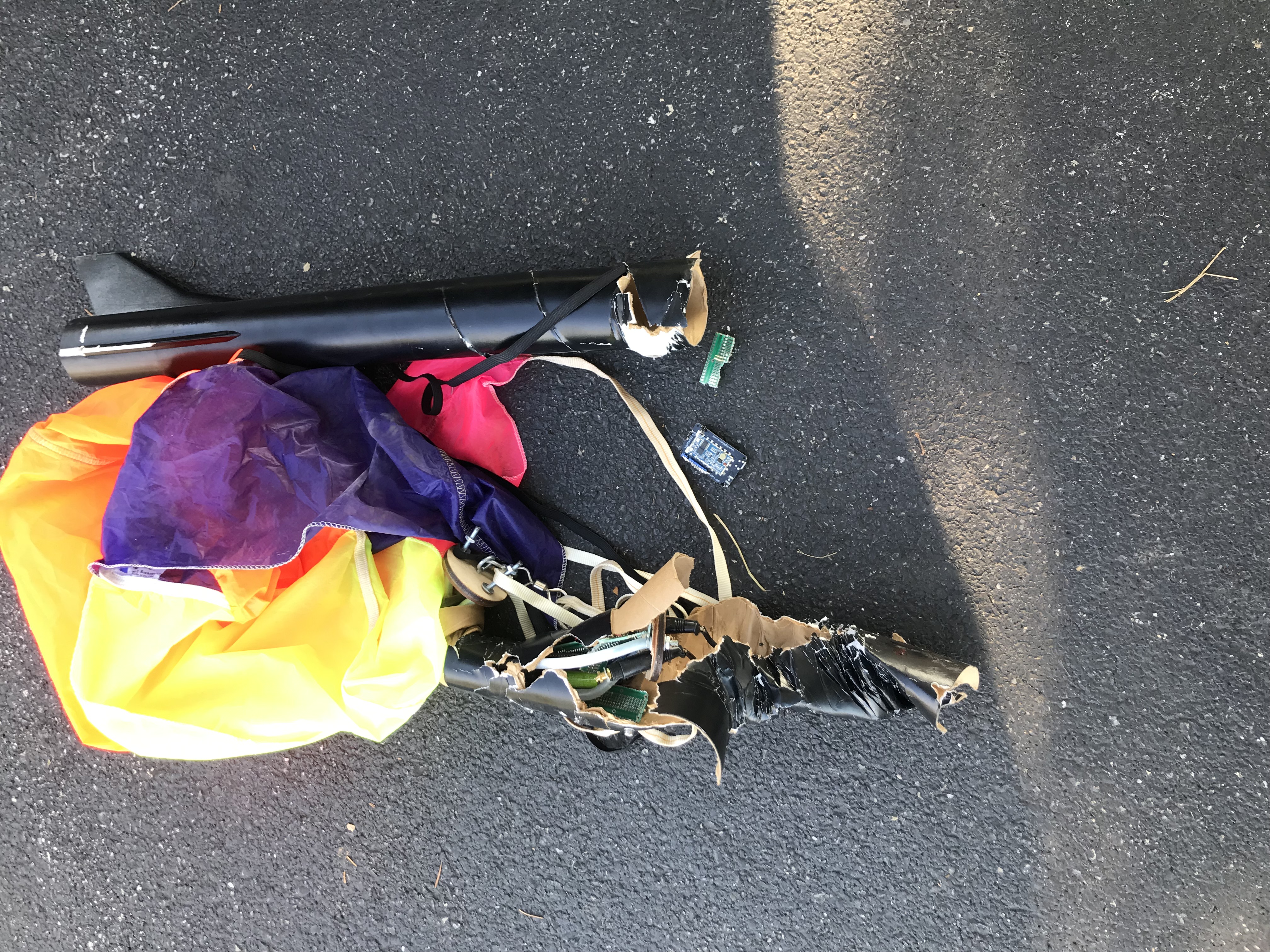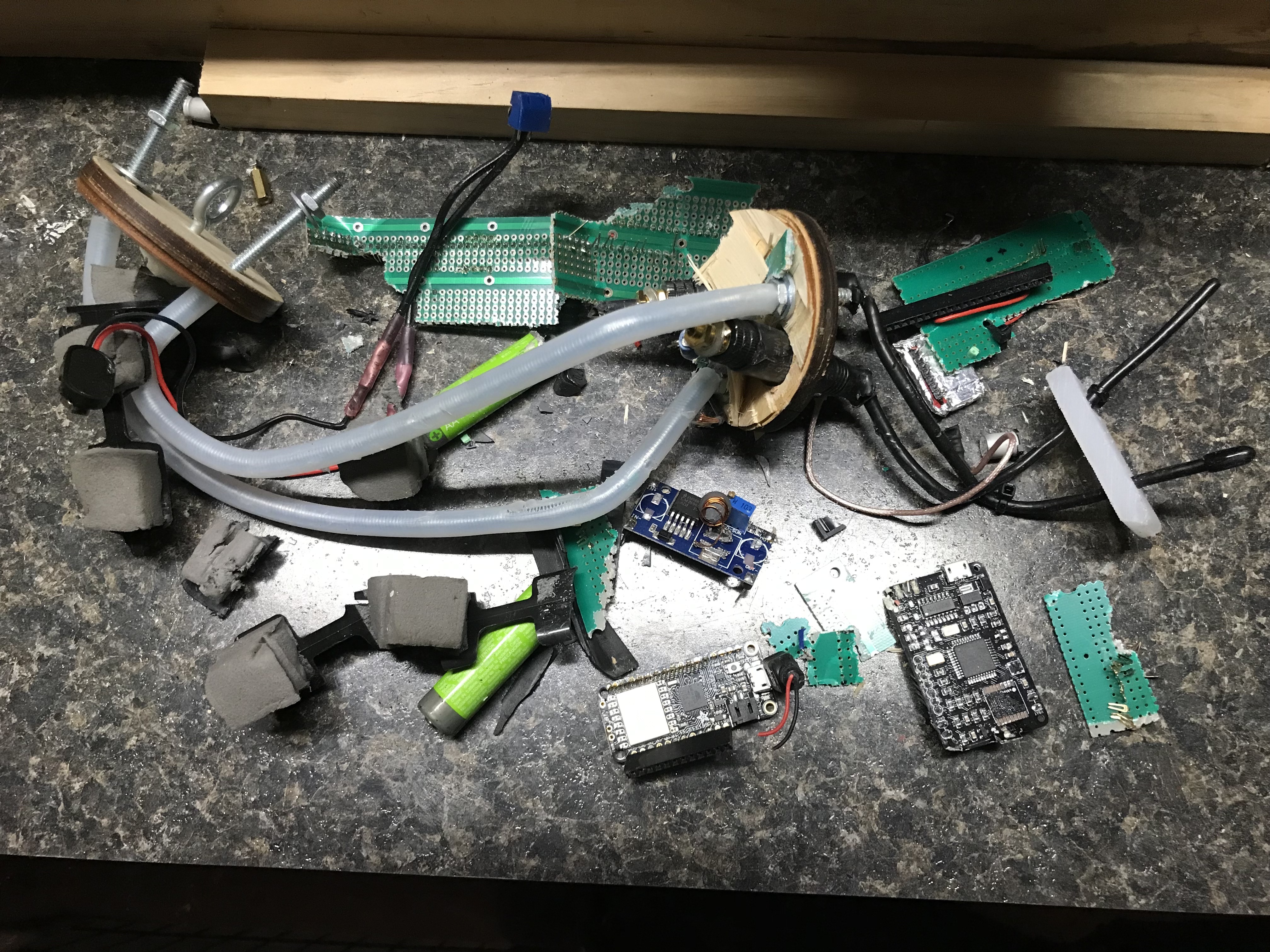Here’s another post with some details on the process of building a model rocket with an electronics package to do some telemetry and messaging via APRS, and LoRa, during a short rocket flight. Make sure to check out the Radio-Rocket Tag to find more posts, or check out the summary static pages on the project posted here. Some of the code is also finding it’s way to a github repo. I wrote a fairly detailed summary post as an intro to all of this, that you might want to check out as well.
Successful V1 Radio Rocket Launch! (Not So Much the Landing…)
Well, It’s good I already started building V2 of the radio rocket, because we completely obliterated V1 on it’s first launch!


Obviously the flight didn’t go as planned, but as with any ‘Successful Failure’ we learned a bunch in the process, and had some pretty good takeaways.
-
Physical Construction - in hind-sight, the design of the electronics bay I think caused the coupler ends to ‘flare-out’ when tightened. This made the friction fight probably a little too tight. It didn’t seem bad, but I suspect coupled with the next items, it contributed to our failed recovery deployment, and subsequent crash. The V2 design goes together differently, so this shouldn’t be a risk.
-
Too Large of a Parachute - I had used the biggest parachute I had that I could fit, in the interest of getting more ‘hang time’ to allow more data to be sent. It was a tight fit, so I believe the tight fit of the parachute and the tight fit of the coupler combined, is what led to the failed recovery. I think for V2 I’ll use 2 smaller parachutes instead of a single large one.
-
elevation to local I-Gate - it seems like at ~800’ above sea level (~400’ AGL) the I-gate in town (W3PC) was able to pick up our APRS packets. All of our launches should easily pass that mark, which means we should pretty much always be able to be found on APRS.fi, without needing to worry about building a portable I-gate.
-
Receiver backups - We launched a couple miles from home, but I had left a receiver and direwolf running at home, which turned out to be great, because the little ground station server didn’t seem to want to run the radios in the field. Luckily we were close enough to home that all the APRS data packets were received there, so I could review some data when we got back. I didn’t have any of the LoRa data, but at least I had something. I think the plan leading up to V2 will be to make permanent APRS and LoRa receiving stations that I can just have running full time at home.
-
Power for Ground Station Server - I tried to power the ground-station server off my laptop’s USB port - I think it was a little underpowered, which I believe is why we had trouble with the radios in the field. (Luckily, due to the above, we still got some data to look at!) I have some 12-5v buck converters, so I’ll probably make up a harness to tap power off of the launch controller batteries or something similar.
-
APRS speed calculations (at least in the APRS software I was running) must only take into account horizontal distance. Rough maths would say that if we gained ~479 feet of elevation in ~ 1.5 seconds (based on data received at my home station) our average velocity between the last packet on the pad, and the first packet in the air was about 319 feet per second (~217 miles per hour) but the APRS data packets sent from the rocket had us at 39 miles per hour
-
On-board data logging is probably desired. If I had been logging data on-board, there might have been more to recover, assuming that I could have found a micro-SD card in the debris.
-
Do a dry test-launch. For V2 I think we’ll do at least one test launch without the electronics bay installed, to verify physical design & to try and reduce the risk of busting up another batch of boards.
-
Ground Control Server Monitoring. Because I had some trouble with the little ground control server, I’d like to build into the dashboard some basic monitoring/interaction with the Single Board Computer that is the brains of the ground station, so that I don’t have to mess around with SSHing into it if I want to try to reboot it, or see some other basic system troubleshooting info in the field.
-
I need a radio-rocketry go-box. Just like we do for our portable radio gear, I need to up my game for an easily transportable ‘kit’ to make getting everything to and from the launch site, and setting up at the launch site, much easier.
I’m sure there will be more as I continue to stew on the post-mortem, but stay tuned, because V2 is already well under way!